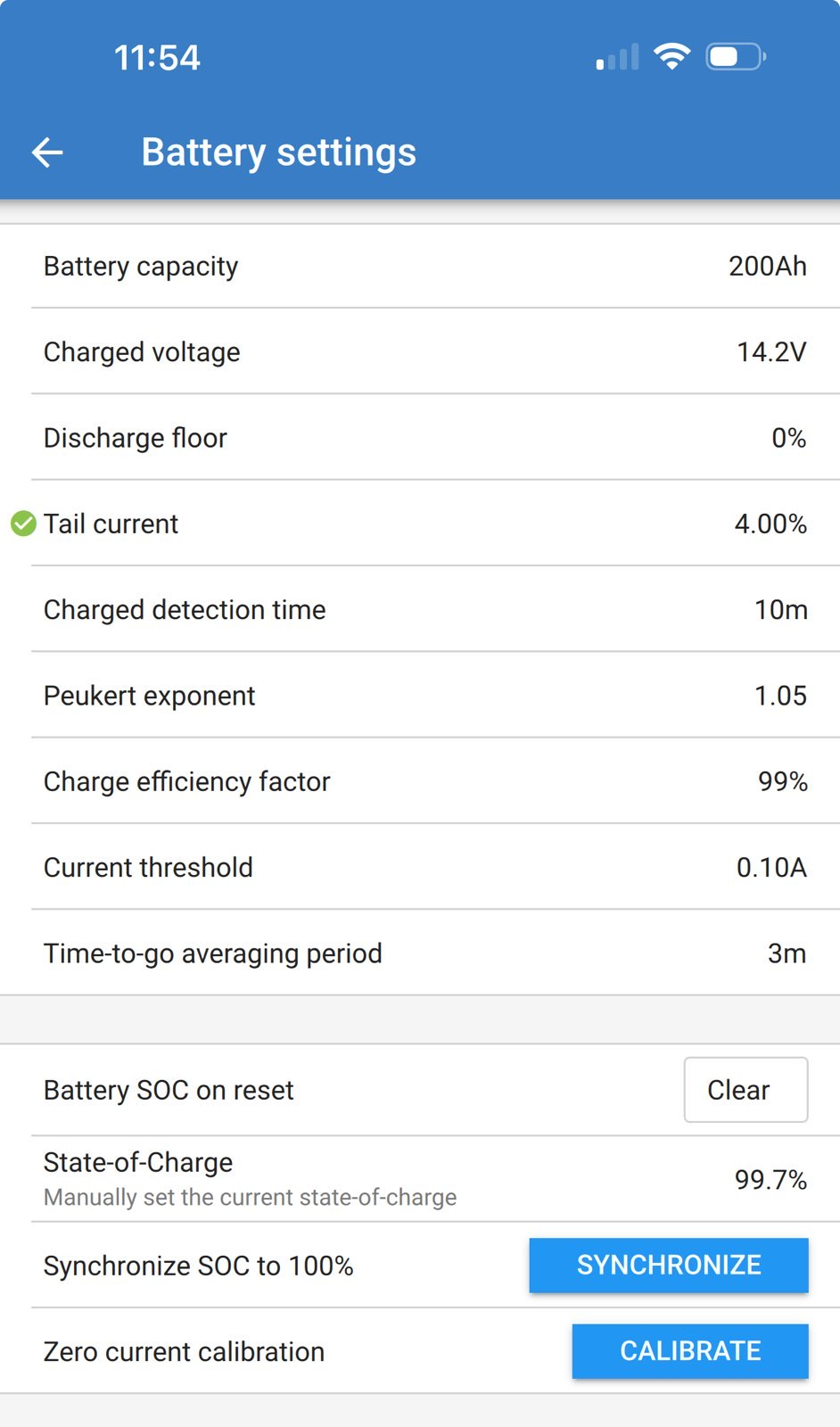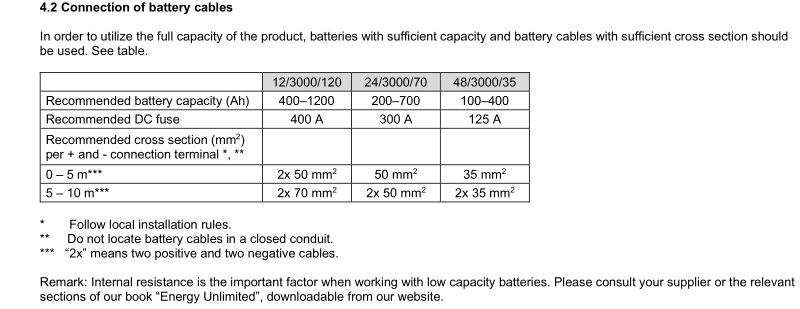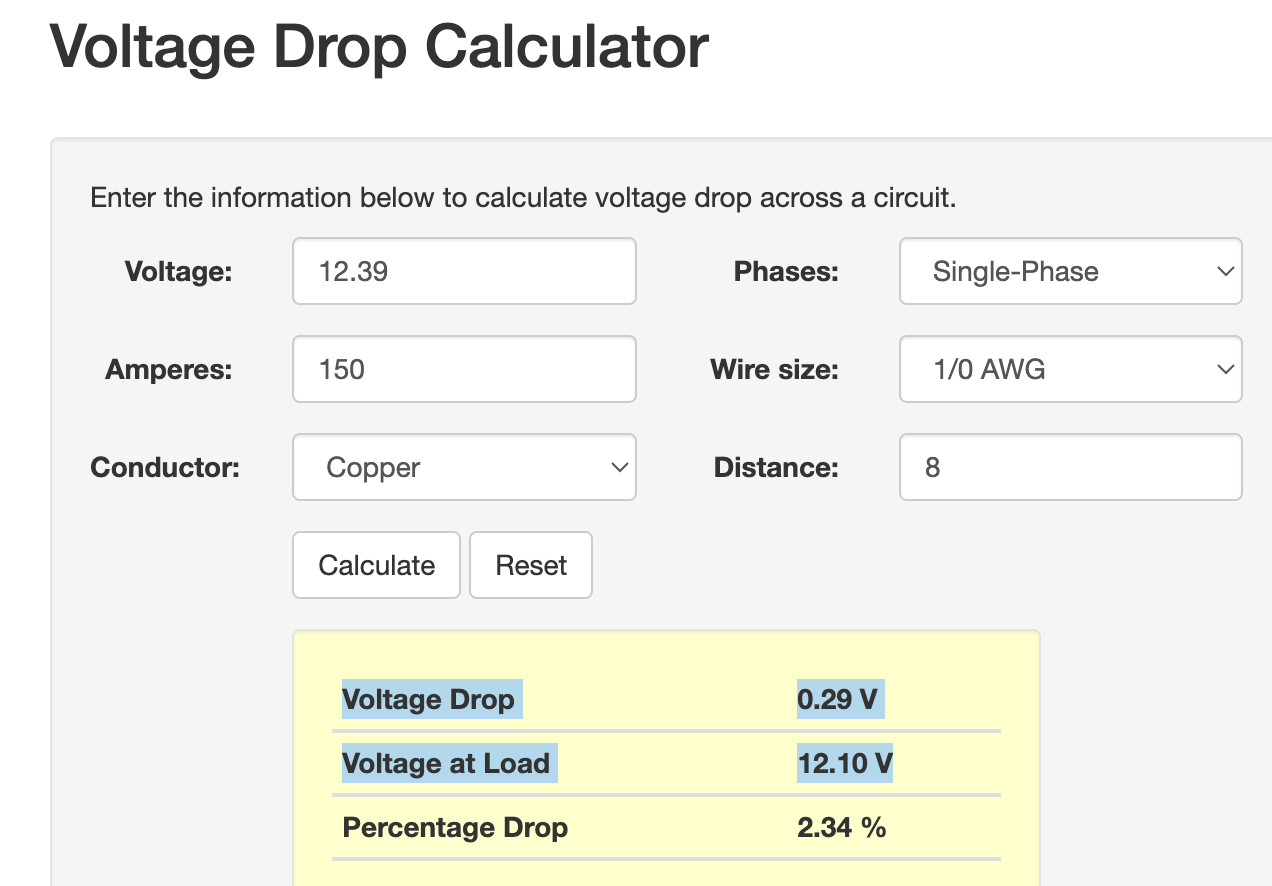My setup:
- 50-amp RV with Onan 5500 generator
- Renogy 400 watt solar panels with Victron SmartSolar controller
- Battleborn 2x100 AH batteries
- Victron MultiPlus II 2x120 inverter charger
- Victron BMV-712 battery monitor.
I have several questions about how this all works in practice. I wonder if the BMV-712 is telling a true story. Here are some puzzling screenshots:
1: This occurs frequently: when charging from AC power, the SOC remains stuck at 64% for a while and jumps to 100%, never in between. I never know if the batteries are fully charged or not.
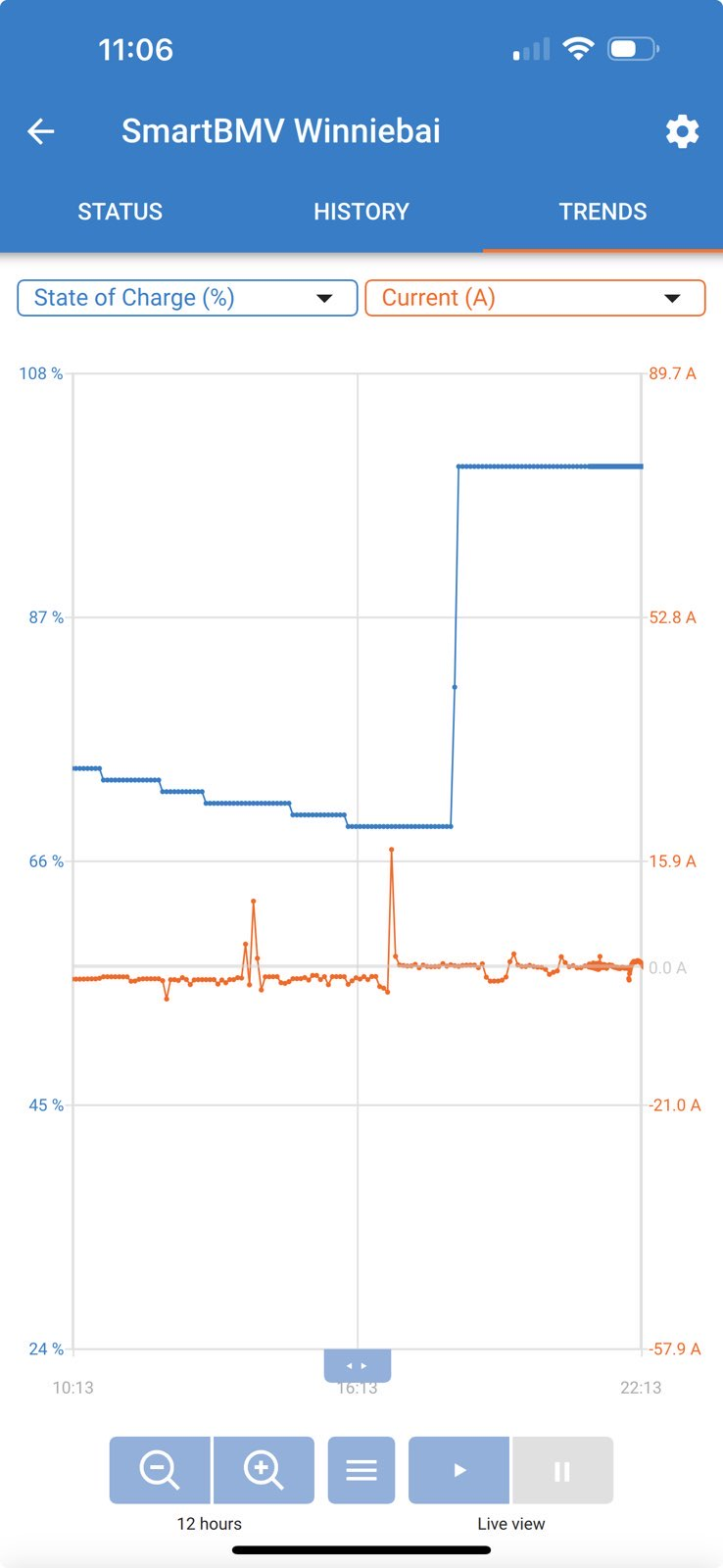
2. When the MultiPlus II is performing a bulk charge, there can be considerable discrepancies between what the MultiPlus II and BMV-712 report. Whom to believe?
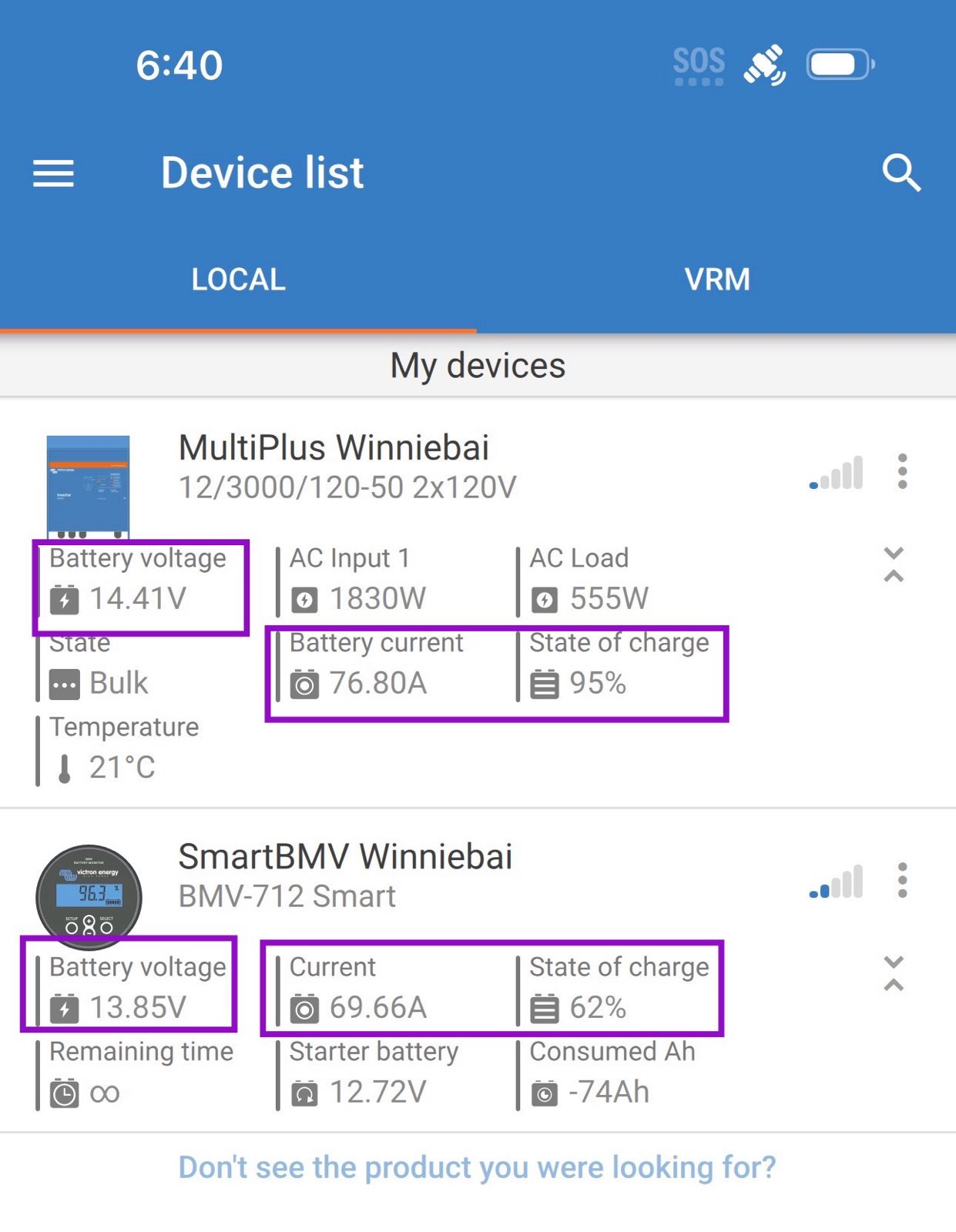
The MultiPlus and battery bank are about 6 feet apart due to the RV layout and are connected with 0-gauge cables, which every online gauge calculator assures me is sufficient. Is this kind of voltage drop normal to see with these high currents?
3. I see the same discrepancies when I run a microwave. The voltage at the inverter is usually 1.2 V below the voltage at the battery.
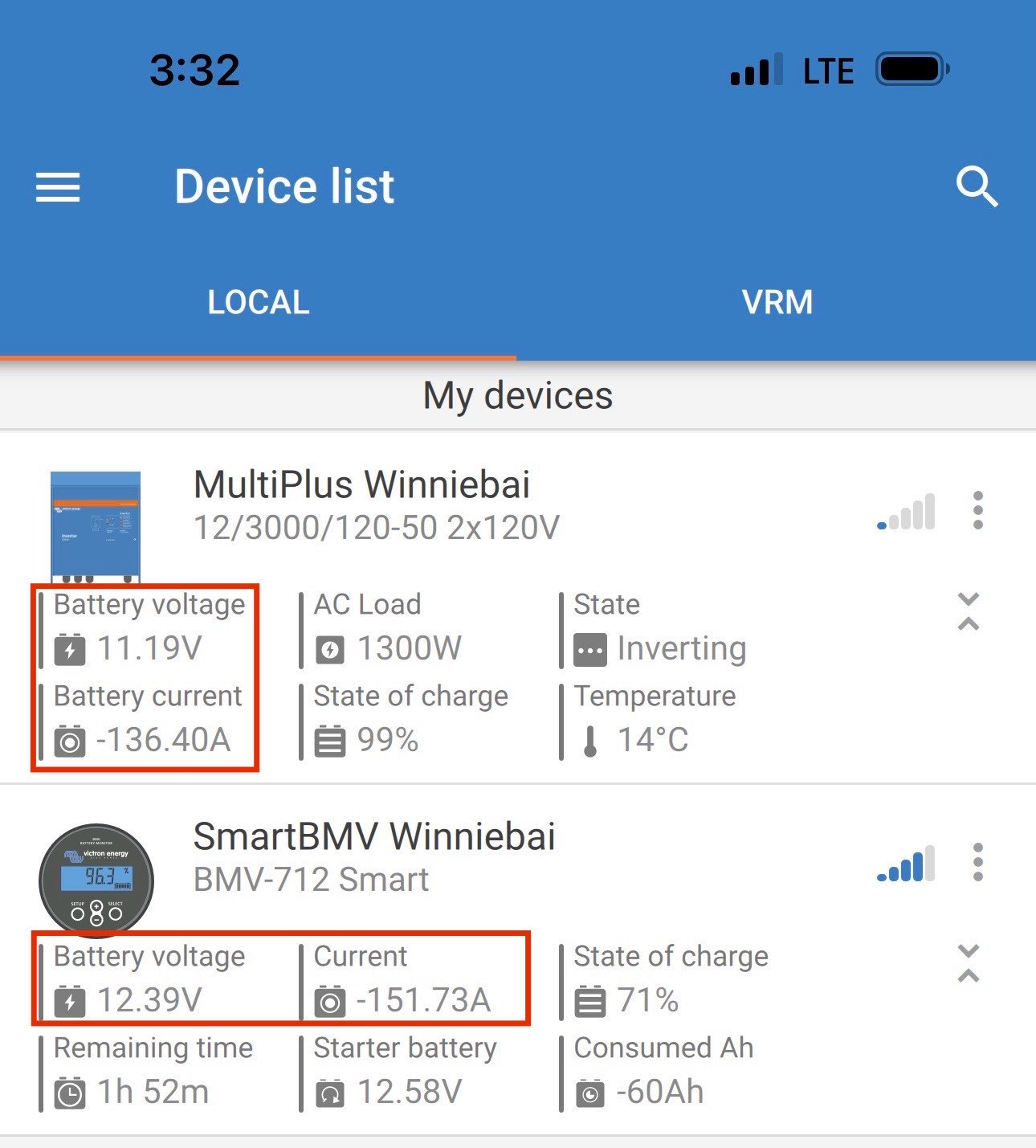
All thoughts are appreciated for understanding this. At the end of the day, I'd like to break camp with my RV and know that the batteries are really at 100% instead of some lesser number.

